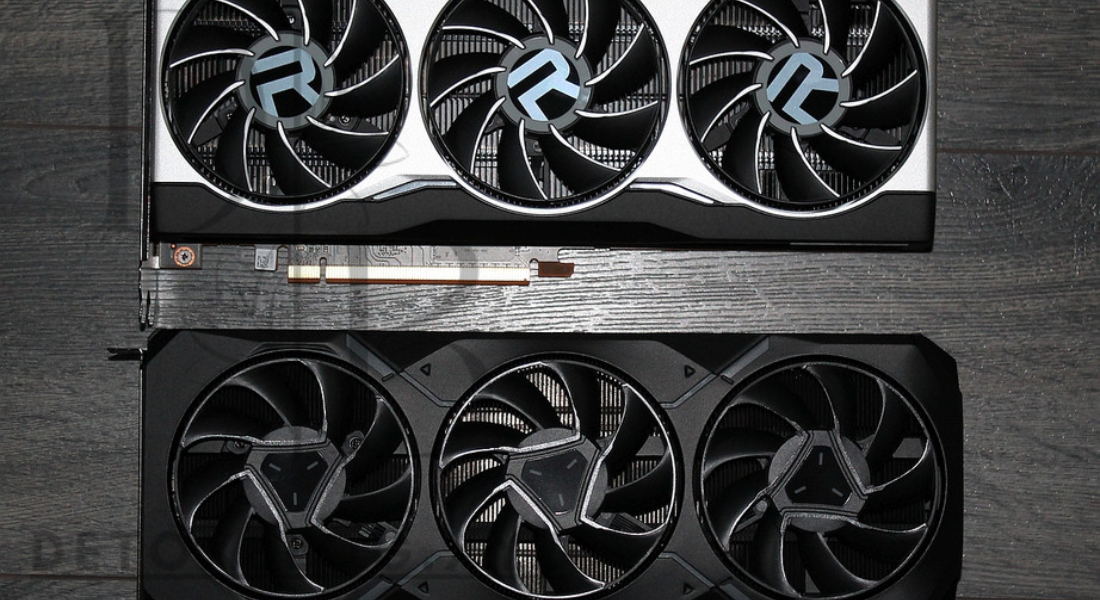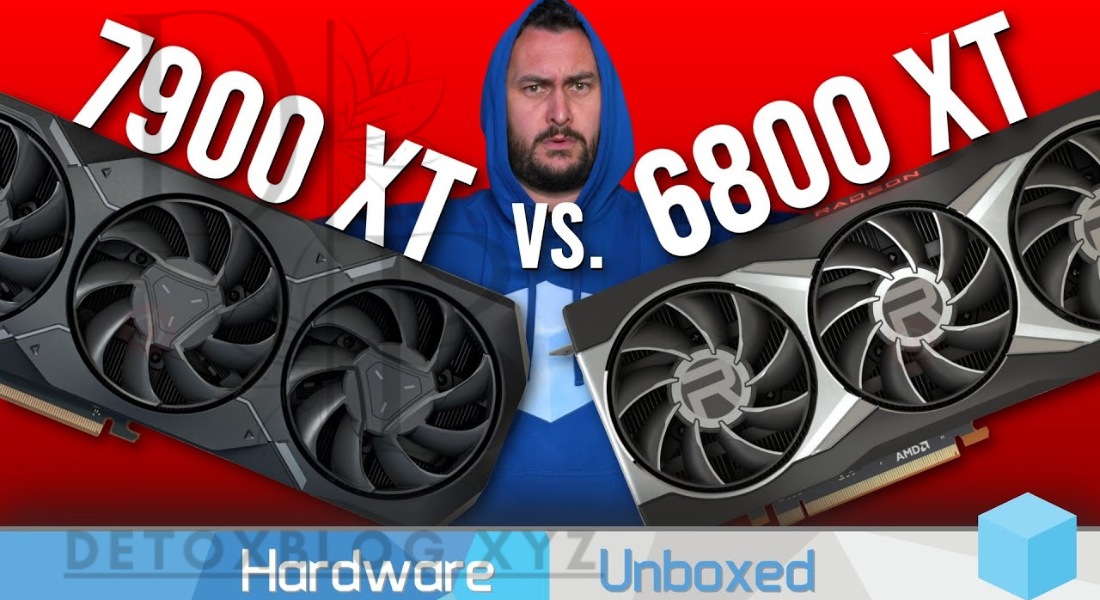When it comes to high-performance graphics cards, AMD’s RX 7900 XTX and RX 6800 XT stand out as top-tier options for gamers and professionals alike. Both GPUs offer exceptional capabilities, but they cater to different needs and budgets. This comprehensive comparison of RX 7900 XTX vs. RX 6800 XT will help you understand their features, performance benchmarks, pricing, and overall value to make an informed decision.
Overview of RX 7900 XTX and RX 6800 XT
The RX 7900 XTX is part of AMD’s latest RDNA 3 architecture, promising cutting-edge performance for 4K gaming and demanding workloads. On the other hand, the RX 6800 XT belongs to the RDNA 2 lineup, offering a strong balance of performance and price for gamers who demand smooth gameplay without breaking the bank.
Both cards come equipped with AMD’s advanced features, including ray tracing, FidelityFX Super Resolution (FSR), and Smart Access Memory. However, the RX 7900 XTX boasts significant upgrades in terms of raw power and efficiency. These improvements ensure smoother gameplay, faster load times, and better multitasking for those handling a combination of gaming and productivity tasks.
Performance: RX 7900 XTX vs. RX 6800 XT
Gaming Performance
When comparing RX 7900 XTX vs. RX 6800 XT in gaming scenarios, the RX 7900 XTX consistently outperforms its predecessor. With a higher core count, increased clock speeds, and improved ray tracing capabilities, the RX 7900 XTX delivers superior performance in 4K and high-refresh-rate gaming. Titles such as Cyberpunk 2077, Forza Horizon 5, and Call of Duty: Modern Warfare II run smoothly on the RX 7900 XTX, even with maximum settings enabled.
The RX 6800 XT, while slightly older, remains a formidable option for 1440p gaming. It handles most AAA titles with ease, offering high frame rates and exceptional visual fidelity. However, in resource-intensive games or at 4K resolution, the RX 7900 XTX has a noticeable edge. For gamers who prioritize competitive esports titles or stick to less demanding settings, the RX 6800 XT provides a cost-effective solution without sacrificing too much visual quality.
Ray Tracing and Visual Fidelity
Ray tracing is a critical feature for modern GPUs, and RX 7900 XTX vs. RX 6800 XT shows a clear winner here. The RX 7900 XTX leverages enhanced ray tracing cores and an improved architecture to deliver better lighting, shadows, and reflections. When playing graphically intensive games like Control or Metro Exodus Enhanced Edition, the RX 7900 XTX maintains higher frame rates while delivering immersive visuals.
While the RX 6800 XT supports ray tracing, it cannot match the visual quality and frame rates provided by the RX 7900 XTX in this area. Gamers aiming for ray-traced visuals at a reasonable cost may still find the RX 6800 XT adequate for older or less demanding games, but newer titles may push its capabilities to the limit.
Productivity and Workloads
For creators and professionals, the RX 7900 XTX is the better choice between RX 7900 XTX vs. RX 6800 XT. Its higher VRAM, improved compute capabilities, and RDNA 3 enhancements make it ideal for video editing, 3D rendering, and other GPU-intensive tasks. Tools such as Adobe Premiere Pro, Blender, and Unreal Engine benefit significantly from the RX 7900 XTX’s increased bandwidth and efficiency.
While the RX 6800 XT is still capable, it may struggle with more demanding workloads. For example, rendering 4K or 8K videos, working with complex 3D models, or performing AI-driven tasks like upscaling require the RX 7900 XTX’s advanced architecture. Professionals using multiple monitors or engaging in multitasking workflows will also appreciate the RX 7900 XTX’s ability to handle heavy loads seamlessly.
Specifications Comparison
RX 7900 XTX Specifications
- Architecture: RDNA 3
- Stream Processors: 6144
- Base Clock: 1900 MHz
- Boost Clock: Up to 2500 MHz
- VRAM: 24 GB GDDR6
- Memory Bus: 384-bit
- TDP: 355W
RX 6800 XT Specifications
- Architecture: RDNA 2
- Stream Processors: 4608
- Base Clock: 1825 MHz
- Boost Clock: Up to 2250 MHz
- VRAM: 16 GB GDDR6
- Memory Bus: 256-bit
- TDP: 300W
Key Features of RX 7900 XTX vs. RX 6800 XT
Ray Tracing Enhancements
The RX 7900 XTX introduces second-generation ray tracing cores, providing significantly better performance in ray-traced games. This improvement makes a noticeable difference when comparing RX 7900 XTX vs. RX 6800 XT in modern titles that heavily utilize ray tracing. Gamers can enjoy richer lighting effects and realistic shadows without sacrificing frame rates.
Power Efficiency
Despite its higher performance, the RX 7900 XTX is more power-efficient than its predecessor. AMD has made significant strides in optimizing power consumption with RDNA 3, allowing the RX 7900 XTX to deliver more performance per watt compared to the RX 6800 XT. This efficiency is particularly important for users with higher electricity costs or those concerned about energy consumption.

Expanded VRAM
With 24 GB of GDDR6 memory, the RX 7900 XTX offers ample headroom for future-proofing and demanding applications. In RX 7900 XTX vs. RX 6800 XT, the latter’s 16 GB VRAM is sufficient for most scenarios but may fall short in certain professional or high-resolution gaming environments. Gamers looking to use 4K textures or stream gameplay at high quality will benefit greatly from the extra VRAM of the RX 7900 XTX.
Pricing and Value
Price is a crucial factor when deciding between RX 7900 XTX vs. RX 6800 XT. As the newer and more powerful card, the RX 7900 XTX comes with a higher price tag. It is an investment for gamers seeking the best performance or professionals needing a GPU for intensive tasks. Depending on regional pricing and availability, this cost may be offset by its superior longevity and features.
The RX 6800 XT, however, offers excellent value for its price. It provides strong performance for 1440p gaming and can even handle 4K in less demanding games. For budget-conscious buyers, the RX 6800 XT is a compelling option that doesn’t compromise significantly on performance. With occasional discounts and promotions, the RX 6800 XT is a popular choice for those seeking reliable gaming hardware on a tighter budget.
Final Verdict
Choosing between RX 7900 XTX vs. RX 6800 XT requires careful consideration of your specific requirements. Both GPUs deliver excellent performance, but their target audiences and use cases differ significantly.
The RX 7900 XTX is the clear winner for enthusiasts who demand cutting-edge performance, 4K gaming at high frame rates, and superior ray tracing capabilities. It is especially appealing for gamers who want the latest technology or professionals working on resource-intensive tasks such as video editing, 3D rendering, or AI workloads. Its larger VRAM capacity, improved efficiency, and advanced architecture make it a more future-proof option for those who want to invest in a high-performance GPU that can handle next-generation titles with ease.
On the other hand, the RX 6800 XT remains a fantastic choice for gamers focused on 1440p gaming or those with tighter budgets. It offers a compelling balance of price and performance, handling most modern games with impressive visuals and smooth frame rates. While it lacks the advanced ray tracing performance and VRAM capacity of the RX 7900 XTX, it still holds its ground in delivering an excellent gaming experience for users who don’t necessarily need the bleeding-edge features of AMD’s latest architecture.
Price is another key factor to consider in RX 7900 XTX vs. RX 6800 XT. The RX 7900 XTX comes at a premium, reflecting its advanced features and superior performance. For buyers with deep pockets or professionals seeking long-term reliability, this investment is worthwhile. Meanwhile, the RX 6800 XT provides a more affordable option without sacrificing too much in terms of performance, making it an excellent value pick for budget-conscious gamers or casual creators.
